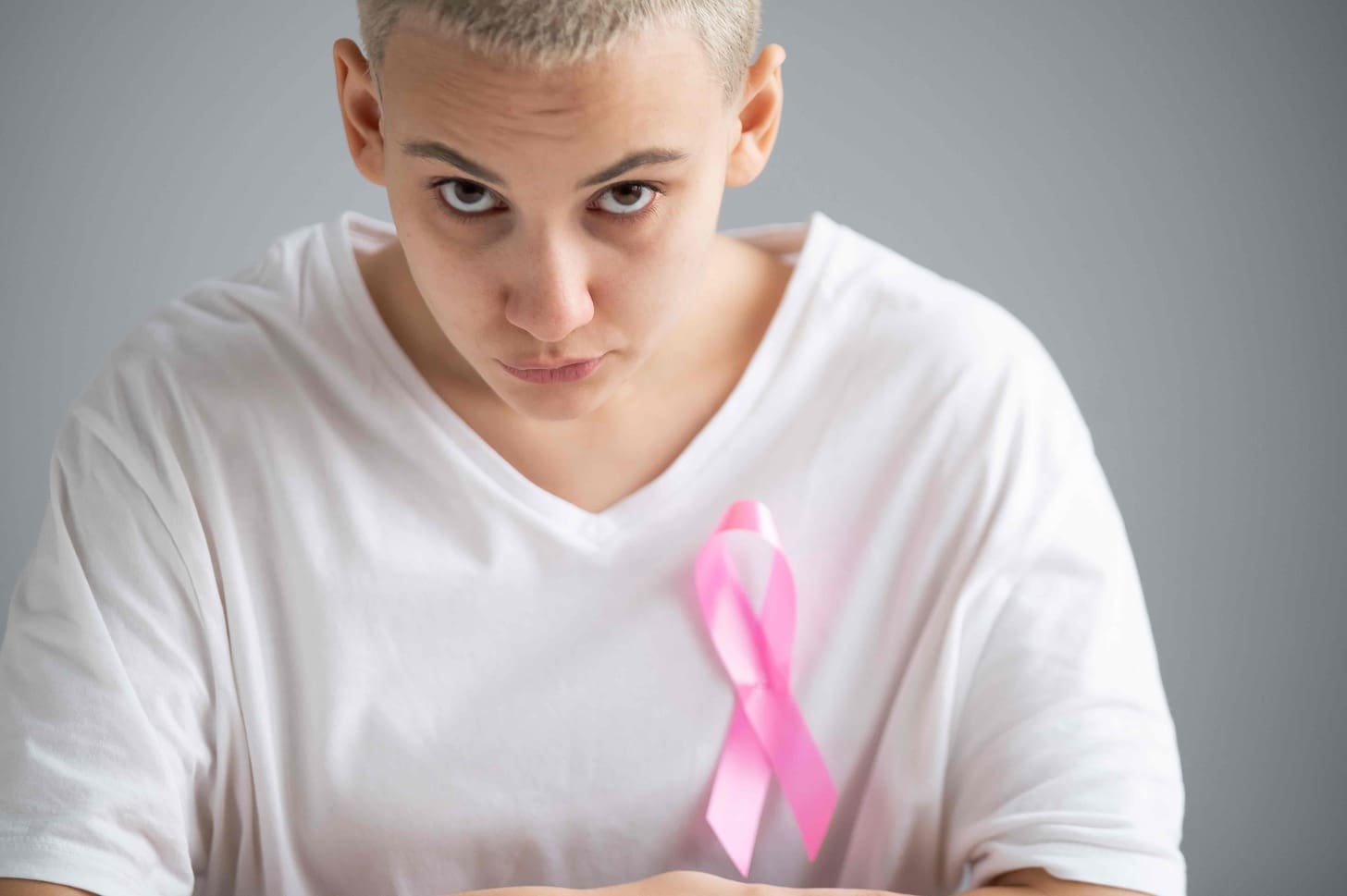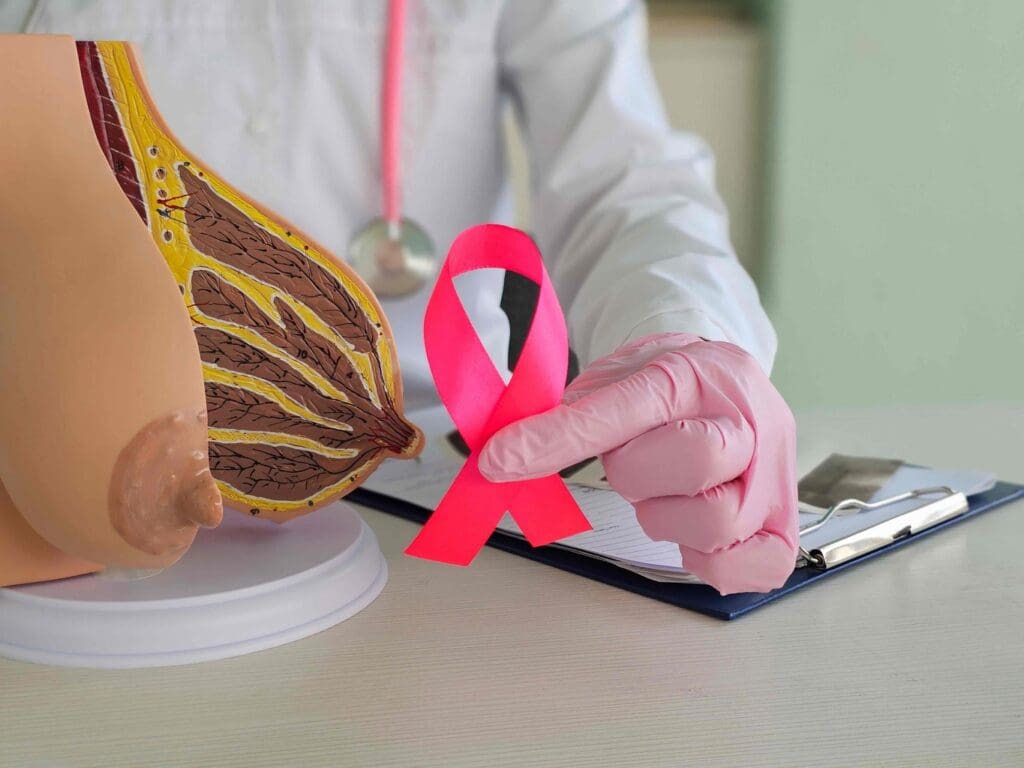Last Updated on November 26, 2025 by Bilal Hasdemir

Breast chemotherapy usually lasts 3 to 6 months. Each cycle is 2 to 3 weeks long. At Liv Hospital, we make treatment plans that fit each patient’s needs.
The number of chemotherapy rounds varies from 4 to 8. For example, the AC-T regimen includes doxorubicin, cyclophosphamide, and paclitaxel. It’s given in eight treatments.
Chemotherapy can be tough. Our team is here to offer world-class healthcare and support every step of the way.
Key Takeaways
- Breast cancer chemotherapy typically lasts 3 to 6 months.
- Treatment cycles usually occur every 2 to 3 weeks.
- The number of chemotherapy rounds can range from 4 to 8.
- Treatment plans are tailored to individual patient needs.
- Liv Hospital provides complete support throughout the treatment process.
Understanding Breast Cancer Chemotherapy Basics
Chemotherapy is a key treatment for breast cancer. It uses drugs to kill cancer cells and stop them from growing. This helps prevent the cancer from spreading to other parts of the body.
What Is Chemotherapy and How Does It Work?
Chemotherapy targets fast-growing cells, like cancer cells. Breast cancer chemotherapy drugs aim to destroy these cells. This reduces tumor size and stops them from growing more.
Doctors choose the right drugs and how to give them based on the cancer type and stage. They also consider the patient’s health. Understanding how chemotherapy works helps patients make better treatment choices.
The Role of Chemotherapy in Breast Cancer Treatment
Chemotherapy is very important in treating breast cancer, mainly when it has spread. It can be used before surgery to shrink tumors (neoadjuvant chemotherapy) or after to kill any remaining cells (adjuvant chemotherapy).
Knowing how chemotherapy works helps patients understand their treatment options. This way, they can make informed decisions about their care.
How Many Rounds of Chemo Is Normal for Breast Cancer
Many people with breast cancer wonder about the number of chemotherapy rounds. Chemotherapy uses drugs to kill cancer cells. The number of rounds depends on the cancer type and stage.
Typical Range of 4-8 Chemotherapy Cycles
Cycles are given every 2-3 weeks to let the body recover. The exact plan depends on the patient’s health, cancer stage, and tumor details.
Factors That Determine the Number of Rounds
Several things affect how many chemotherapy rounds a patient needs. These include:
- The stage and type of breast cancer
- Tumor size and characteristics
- Patient’s overall health and medical history
- Response to initial treatment
- Genetic factors, such as HER2 status
The American Cancer Society says, “Treatment plans are made for each patient based on their needs and cancer details.” This approach helps patients get the best treatment with fewer side effects. Understanding these factors helps patients prepare for their treatment and make informed choices.
In summary, while most breast cancer treatments last 4 to 8 cycles, the exact number varies. Healthcare providers tailor treatment to each patient’s needs. This ensures the best chemotherapy results for breast cancer patients.
Standard Duration of Breast Cancer Chemotherapy
Knowing how long breast cancer chemotherapy lasts is key for patients. Each case is different, and treatment time can change based on many factors.
Chemotherapy for breast cancer usually goes in cycles. The whole treatment can last several months. The exact time depends on the cancer’s stage, the drugs used, and the patient’s health.
The 3-6 Month Treatment Timeline
Most of the time, breast cancer chemotherapy lasts 3 to 6 months. This lets doctors give many cycles of treatment. It helps kill any cancer cells left.
- Typical treatment duration: 3-6 months
- Number of cycles: 4-8 cycles
- Cycle intervals: 2-3 weeks
Patients get checked often to see how well the treatment is working. We also help manage side effects. Our goal is to support our patients every step of the way.
Understanding 2-3 Week Cycle Intervals
Chemotherapy cycles for breast cancer usually last 2-3 weeks. This time lets the body recover from the treatment. It also gives time for blood cells to come back.
The time between cycles is important for the total treatment length. For example, 6 cycles with 3-week breaks will take about 4.5 months.
We know the treatment time can be tough for patients. Our team is here to offer all the support and care needed. We want to help our patients through their chemotherapy journey.
Common Chemotherapy Regimens for Breast Cancer
Chemotherapy for breast cancer isn’t the same for everyone. Different treatments are chosen based on each patient’s needs. This can be confusing, so let’s look at the common chemotherapy regimens used in breast cancer treatment.
The AC-T Regimen: A Common Chemotherapy Protocol
The AC-T regimen is a common treatment for breast cancer. It includes Adriamycin (doxorubicin) and Cyclophosphamide (AC) followed by Taxotere (docetaxel) (T). Patients usually get 4 cycles of AC and then 4 cycles of T, for a total of 8 cycles. This regimen is often recommended for those with higher-risk breast cancer.
The AC-T regimen can be tough, but it’s a proven treatment for breast cancer. The AC part is given every 2-3 weeks, followed by the T part on the same schedule.
Other Standard Chemotherapy Protocols
While the AC-T regimen is common, other treatments are also used. These include:
- TC Regimen: Taxotere (docetaxel) and Cyclophosphamide, given for 4 cycles.
- FAC Regimen: 5-Fluorouracil, Adriamycin (doxorubicin), and Cyclophosphamide, typically given for 6 cycles.
- TCHP Regimen: Taxotere (docetaxel), Carboplatin, and Herceptin (trastuzumab), often used for HER2-positive breast cancer.
Each regimen has its own schedule and way of being given. The choice depends on the patient’s health and the type of breast cancer they have.
Dosage Schedules and Administration Methods
Chemotherapy dosage schedules vary based on the regimen and patient needs. Chemotherapy is given in cycles, lasting 2-3 weeks each. Dosages are based on the patient’s body surface area, and can be adjusted as needed.
Managing side effects is key, and our healthcare team helps patients with this. Knowing about different chemotherapy regimens and how they are given helps patients prepare for their treatment.
Chemotherapy Before Surgery: Neoadjuvant Treatment
Chemotherapy before surgery is now common in breast cancer treatment. It aims to shrink tumors before they are removed. This method, called neoadjuvant chemotherapy, has greatly improved treatment results for many patients.
Why Do Chemo Before Surgery for Breast Cancer?
Neoadjuvant chemotherapy is mainly used for big tumors or those hard to remove. It makes surgery easier and less invasive. Dr. Jennifer Garber, a medical oncologist, says, “Neoadjuvant chemotherapy can significantly improve surgical options for patients with larger tumors or those that are closely attached to surrounding tissues.”
“The goal of neoadjuvant chemotherapy is not only to shrink the tumor but also to address any microscopic cancer cells that may have spread beyond the primary tumor site.”
Chemotherapy before surgery also helps doctors see how the cancer reacts. This lets them adjust the treatment plan for better results.
Benefits of Tumor Shrinkage Prior to Surgery
Tumor shrinkage before surgery has many advantages, including:
- Increased likelihood of breast-conserving surgery: Shrinking the tumor can make patients eligible for less invasive surgeries.
- Reduced risk of surgical complications: Smaller tumors make surgery easier, cutting down on recovery time and complications.
- Improved assessment of treatment effectiveness: Seeing how the tumor responds to chemotherapy helps doctors fine-tune the treatment plan.
The American Cancer Society notes, “Neoadjuvant chemotherapy is very helpful for patients with big tumors or inflammatory breast cancer. It helps control the disease and improves surgery outcomes.”
Chemotherapy After Mastectomy and Other Surgeries
Chemotherapy is key for some breast cancer patients after surgery. It’s mainly for those with aggressive or high-risk cancers. The choice to have chemotherapy depends on the cancer’s stage, type, and the patient’s health.
Do You Have Chemo After Mastectomy?
Whether you need chemotherapy after a mastectomy varies. It depends on the cancer’s stage, grade, and biological characteristics. For example, hormone therapy might be needed for hormone receptor-positive cancer. Targeted therapy is often suggested for HER2-positive cancer.
Chemotherapy is often needed to lower the risk of cancer coming back. Advanced stage or high-grade cancers usually require it to kill any cancer cells that might have spread.
Timing and Planning of Post-Surgical Chemotherapy
Chemotherapy timing is carefully planned to ensure recovery and reduce cancer risk. It usually starts a few weeks after surgery, when the patient has healed enough.
A team of doctors, including surgeons and oncologists, plan the chemotherapy. They create a treatment plan based on the patient’s needs, cancer characteristics, and health conditions.
Good planning also means talking about side effects and how to manage them. Understanding the treatment plan helps patients prepare for what’s ahead.
Types of Chemotherapy Drugs for Breast Cancer
Chemotherapy for breast cancer uses many drugs, each given in different ways. The choice of drug depends on the cancer’s stage and type, and the patient’s health.
Common Intravenous Chemotherapy Medications
Intravenous chemotherapy is a common way to give drugs. It puts the drugs straight into the blood. Here are some drugs used for breast cancer:
- Doxorubicin (Adriamycin): a drug that stops DNA from being copied in cancer cells.
- Paclitaxel (Taxol): stops cells from dividing by keeping microtubules stable.
- Cyclophosphamide: damages DNA in cancer cells, stopping them from making copies.
These drugs are often mixed together to work better. For example, the AC-T regimen uses doxorubicin and cyclophosphamide followed by paclitaxel for breast cancer.
Chemo Pills for Breast Cancer: Names and Uses
Some breast cancer treatments use oral chemotherapy, or chemo pills. These include:
- Capecitabine (Xeloda): turns into 5-fluorouracil in the body, stopping cancer cells from growing.
- Cyclophosphamide (Cytoxan): can be given orally, in addition to intravenous use.
- Letrozole (Femara) and Anastrozole (Arimidex): used for hormone receptor-positive breast cancer, though not traditional chemotherapy.
Oral chemotherapy is taken at home. It’s important to follow the dosage and schedule to work well and avoid side effects.
Side Effects and Management During Treatment
Chemotherapy for breast cancer can cause various side effects. Knowing how to manage them can make a big difference. Understanding these side effects and how to reduce them is key to keeping your quality of life high.
Common Side Effects of Breast Cancer Chemotherapy
Breast cancer chemotherapy can lead to a variety of side effects. These can range from mild to severe. Common side effects include:
- Fatigue
- Hair loss
- Nausea and vomiting
- Changes in appetite
- Numbness or tingling in hands and feet
These side effects happen because chemotherapy targets cells that grow fast. This includes both cancer cells and some healthy cells. The impact of these side effects can vary from person to person.
Strategies for Managing Side Effects
Managing side effects effectively is key to ensuring that treatment can be completed as planned. Here are some strategies:
| Side Effect | Management Strategy |
|---|---|
| Fatigue | Conserve energy, take regular breaks, and engage in gentle exercise like walking. |
| Nausea and Vomiting | Take anti-nausea medication as prescribed, eat small frequent meals, and avoid strong smells. |
| Hair Loss | Consider using scalp cooling devices, use gentle hair care products, and explore wig options. |
When to Contact Your Healthcare Provider
While many side effects can be managed at home, there are times when it’s important to contact your healthcare provider. Reach out if you experience:
- Severe nausea or vomiting that prevents keeping down fluids
- Fever above 100.4°F (38°C)
- Signs of infection, such as redness, swelling, or pain
- Severe fatigue that interferes with daily activities
Your healthcare team is there to support you throughout your treatment. Don’t hesitate to reach out for guidance on managing side effects or if you’re concerned about your symptoms.
How Breast Cancer Stage Affects Chemotherapy Plans
The stage of breast cancer is key in choosing the right chemotherapy. It’s a detailed process that looks at the tumor size, lymph node involvement, and body spread. This info helps tailor a treatment plan just for you.
Early-Stage Breast Cancer Treatment Protocols
For early-stage breast cancer, chemotherapy helps lower the chance of it coming back. Most plans use a mix of chemotherapy drugs given in cycles. This lets your body rest between treatments.
The usual chemotherapy plans for early-stage breast cancer include:
- AC-T (Adriamycin and cyclophosphamide followed by Taxotere)
- FEC-T (5-fluorouracil, epirubicin, and cyclophosphamide followed by Taxotere)
- TC (Taxotere and cyclophosphamide)
These plans are given every 2-3 weeks for 3-6 months. The exact time depends on the plan and how well you respond.
Advanced and Metastatic Breast Cancer Approaches
In advanced or metastatic breast cancer, chemotherapy aims to slow cancer growth, ease symptoms, and improve life quality. For metastatic breast cancer, the chemotherapy drugs and schedule might be different. Treatment often includes:
- Single-agent chemotherapy, such as capecitabine or vinorelbine
- Combination chemotherapy regimens, like docetaxel and capecitabine
- Switching between different chemotherapy agents to keep treatment effective
Knowing your breast cancer stage and its impact on chemotherapy is vital. We help patients create a treatment plan that meets their needs and health.
Personalized Treatment Approaches
Personalized treatment has changed how we fight breast cancer. It means each patient gets a plan made just for them. This way, treatments fit each person’s unique needs.
How Treatment Plans Are Individualized
Creating a treatment plan is all about looking at many things. This includes the patient’s health, the cancer’s stage and type, and genetic markers. Genetic testing is key in finding specific mutations that guide treatment choices. For example, those with BRCA1 or BRCA2 mutations might get special therapies.
Other important factors are the patient’s menopause status, hormone receptor status, and HER2 status. Healthcare teams use these details to craft treatments that work best for each person.
The Role of Genetic Testing in Treatment Planning
Genetic testing is vital in planning breast cancer treatments. It spots genetic changes that can change how well treatments work. For instance, Oncotype DX tests 21 genes to guess how likely cancer will come back and if chemo will help.
Using genetic testing makes treatments more accurate and effective. This method boosts treatment success and reduces side effects by skipping treatments that won’t help.
Monitoring Progress During Chemotherapy
Checking how well chemotherapy works is a detailed process. It helps doctors adjust treatments as needed. Regular checks are key to see if the treatment is working and to make changes.
Types of Tests and Evaluations During Treatment
Many tests and checks are done during chemotherapy. These include:
- Imaging tests like CT scans, MRI, or PET scans to see how tumors grow or shrink
- Blood tests to look at tumor markers and overall health
- Physical exams to check overall health and find side effects
- Biopsies sometimes to see how the tumor reacts to treatment
Medical experts say, “Regular checks are key to see if treatment is working and to make changes.” Knowing how many rounds of chemotherapy are is also important for planning treatment.
How Doctors Determine Treatment Effectiveness
Doctors check how well treatment is working by looking at test results. They see if tumors are getting smaller, staying the same, or growing. Then, they decide if to keep the current treatment, make changes, or try something new.
“The goal is to make treatment as effective as possible while keeping side effects low,” Dr. Jane Smith, a top oncologist, explains. “By watching how patients do, we can make treatment fit each person’s needs.”
Conclusion: Life During and After Breast Cancer Treatment
Breast cancer treatment is a journey that needs care and support. At Liv Hospital, we offer top-notch healthcare services. These services meet both physical and emotional needs of our patients.
During treatment, patients often face challenges from chemotherapy. We help them manage these side effects. This way, they can keep their quality of life high.
After treatment, patients need ongoing support to adjust back to life. Our team at Liv Hospital is here to help. We provide monitoring and follow-up care to support them.
We believe in supporting life during and after breast cancer treatment. Our team is ready to offer the resources and guidance needed. This helps patients thrive during and after treatment.
FAQ
How many rounds of chemo are normal for breast cancer?
Most people get between 4 to 8 cycles of chemo. This depends on the cancer type, stage, and the chemo plan.
What is the standard duration of breast cancer chemotherapy?
Chemo usually lasts 3 to 6 months. You’ll get treatments every 2 to 3 weeks.
Do you have chemo after mastectomy?
Yes, some people get chemo after a mastectomy. This is for those with big tumors or lymph node issues.
Why do chemo before surgery for breast cancer?
Chemo before surgery makes tumors smaller. This makes surgery easier and can lead to better results.
What are the common chemotherapy regimens for breast cancer?
You might get the AC-T regimen, which is 8 cycles long. Other plans depend on your needs.
What types of chemotherapy drugs are used for breast cancer?
You might get drugs like anthracyclines and taxanes through an IV. Or, you might take pills like capecitabine and cyclophosphamide.
How does breast cancer stage affect chemotherapy plans?
The stage of your cancer changes your chemo plan. Early-stage cancer gets less intense treatment. Advanced cancer gets stronger therapy.
How are treatment plans individualized for breast cancer patients?
Plans are made just for you. They consider your tumor, genetic tests, and health.
How is progress monitored during chemotherapy?
Doctors use tests and scans to check how well chemo is working. They adjust your plan as needed.
What are the common side effects of breast cancer chemotherapy?
Side effects include tiredness, hair loss, nausea, and low white blood cell counts. There are ways to manage these.
References
- American Cancer Society. (n.d.). Chemotherapy for Breast Cancer. Retrieved from https://www.cancer.org/cancer/types/breast-cancer/treatment/chemotherapy-for-breast-cancer.html
- Breast Cancer Research Foundation (BCRF). (n.d.). Chemotherapy for Breast Cancer. Retrieved from https://www.bcrf.org/about-breast-cancer/chemotherapy-breast-cancer/
- Susan G. Komen. (n.d.). Chemotherapy Drugs for Breast Cancer. Retrieved from https://www.komen.org/breast-cancer/treatment/type/chemotherapy/drugs/
- Living Beyond Breast Cancer (LBBC). (n.d.). A/C-T (Doxorubicin, Cyclophosphamide, and Paclitaxel/Docetaxel) Common Regimens. Retrieved from https://www.lbbc.org/about-breast-cancer/treatments/chemotherapy/common-regimens/ac-t-doxorubicin
- Vugia, A., & Esserman, L. J. (2014). Neoadjuvant chemotherapy and breast cancer: an old idea, revisited. Journal of Thoracic Disease, 6(Suppl 4), S448–S451. PMC4132221. Retrieved from https://pmc.ncbi.nlm.nih.gov/articles/PMC4132221/








